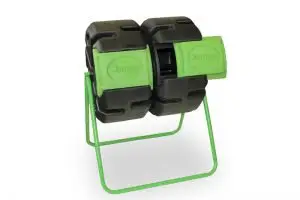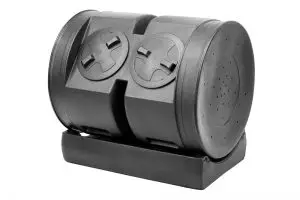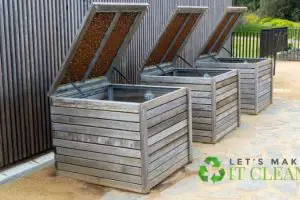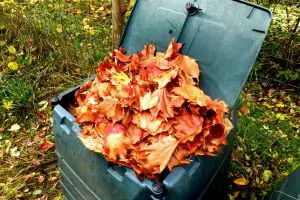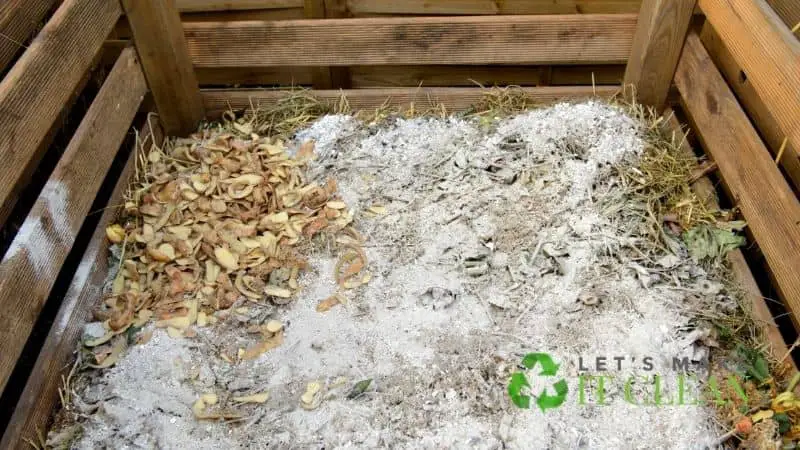Using mushroom compost on your farm is an excellent idea as it offers vital nutrients required for healthy plant growth.

Additionally, it helps to make acidic soils more productive by providing an alkaline balance. The best thing is that it has a less tedious preparation process.
Quick Navigation [show]
Is mushroom compost made from mushrooms? Or is it compost from growing mushrooms?
Mushroom compost is an excellent addition to your garden. It is a perfect soil builder, and it comes in handy in breaking down the dense clay and helping keep the soil moist.
When you buy mushroom compost, it is identified as compost soil or as mushroom compost.
But what exactly is mushroom compost? Can you make it yourself, and how do you use it?
What Is Mushroom Compost?
Mushroom compost is an excellent choice for any gardener because it has an attractive dark color of healthy soil. It is a nutrient-rich blend of gypsum, straw, peat, and other organic matter types, and it works to condition and enriches your garden soil.
Most farmers are apprehensive of some types of composts as they come with a pH that burns their plants.
Well, not so for mushroom compost as it comes with a pH within the range that helps your plants thrive instead of destroying them.
Mushroom compost is also popular among mushroom growers. It is a slow-release fertilizer that mushroom farmers make using various types of organic matter, including wheat straw, hay, corn cobs and hulls, horse manure, and poultry manure.
The ingredients for making mushroom compost can vary from one farmer to another since different farmers can have varying processes of growing mushrooms. Some mushroom-making recipes contain additional materials such as soybean meal, peat moss, lime, and gypsum.
The mushroom spawn is then steam pasteurized, which helps kill weed seeds and all other harmful products and agents that may be present.
The mushroom composting process can take up to three to four weeks to complete.
It is under close monitoring by the growers to ensure the temperatures are enough to guarantee healthy compost.
The finished mushroom compost is rich in nutrients and a useful soil conditioner that you can use in soil amendment and plant growth. The leftovers from the composting process are sold as fertilizer or thrown away.
The result of a mushroom compost pile is full of nutrients, and you can use it to enrich plants such as tomatoes in your vegetable gardens. You can also use it on your loving plants in the garden beds.
Benefits of Mushroom Compost

If you are looking for mushroom compost to purchase (view on Amazon), you’ll get it in bags labeled as SMS or SMC, which stands for spent mushroom substrate and spent mushroom compost. You can get mushroom compost in landscape supply companies or garden centers.
You can also find it by bushel or truckload, depending on its use in the garden.
Among the many uses of the mushroom compost include soil conditioning for gardening, lawns, and potting soil. However, it would be best if you were careful with using the mushroom compost as it contains high levels of soluble salts.
The high salt levels can have detrimental effects on salt-sensitive plants, and it can also be harmful to young seedlings and germinating seeds.
Mushroom compost is inexpensive and offers essential nutrients that are required in the healthy growth of plants. It also helps in watering your gardens as it enhances the water retention capacity of your soil.
Mushroom compost is useful for various garden plants, including a vegetable garden, fruits, flowers, and herbs.
What Is Mushroom Compost Not Good For?
Mushroom compost contains chalk, which is alkaline. The alkaline mixture has benefits in areas where the soil is acidic, and alkaline is needed to balance.
Frequent use of spent mushroom compost causes the build-up of chalk particles in the soil, which increases alkalinity. Increased soil alkalinity may cause problems with plant growth as the chalk can make other nutrients unavailable.
In severe cases of excess alkalinity, there is yellowing of the leaves, and you can also experience stunted growth for the plants.
Thus, mushroom compost is not good for neutral or alkaline soils, resulting in excess alkalinity by adding more chalk.
If you are in areas where you grow ericaceous plants such as azaleas and camellias, you should avoid using mushroom compost. The plants love acidic conditions, and they hate chalk.
Using mushroom compost is also unsuitable for fruit crops that prefer neutral to acidic conditions. You shouldn’t use mushroom compost as a lawn top-dressing except if the soil is very acidic and there is a need for lime.
How to Make Your Own Mushroom Compost
If you want to use mushroom compost, you don’t have to purchase it. You should start with hot composting for about two weeks. The pile should exceed about 160 degrees Fahrenheit for a few days to help kill and weeds and harmful agents.
It will also help if you turn the pile after a day or two. This helps to get the less composed materials on the outside to the center of the pile where the temperatures are high.
You should also add water by spraying the pile to maintain moisture.
Once the process is complete, transfer the compost to a secondary pile and allow it to age for some weeks. Allow it to age until it becomes dark brown. You don’t have to turn the secondary compost, but you should keep it moist.
Once the secondary process is done, then you are good to go, especially if you are not using it for mushroom farming. The mushroom compost will be more nutrient-dense since it won’t be spent on mushroom substrate.
If you’ll be using the compost for mushroom growing, or if you used hardwood sawdust, then you need to sterilize it.
If your mushroom compost comprises organic matter such as coffee grounds, chicken manure, and straw, sterilizing it is easy. First, heat water in a pot to a rolling boil. Put the compost in a cloth bag and submerge it in the water, turning off the heat. Allow it to sit for some time until it is now pasteurized and ready to use in the mushroom farms, etc.
Are There Chemical Residues in Mushroom Compost?
Mushroom compost may contain chemical residues that may have been used in treating straw. It may also contain pesticide residues, especially organochlorides, which may have been used in spraying the fungus gnat.
If the pile was stored outside, it might contain insects that are attracted to decaying matter.
How and When to Use Mushroom Compost
You can use the mushroom compost in various ways. For instance, you can dig it into your vegetable garden before planting. You can also add the compost directly under the roots of the seedlings.
You can also use the compost by adding it as a substrate around the seedlings or using it as a top dress.
If you are using mushroom compost with established plants, then you need to be careful so that the plants do not rot. If the compost comes into contact with the plant’s young stems, they are bound to rot. To prevent this, you should make a 5-6 inches layer.
The best time to use mushroom compost in the entire garden is during spring. If you want to use the compost for growing vegetables, you should add the substrate a few months before planting.
The amount of mushroom compost you use in your garden should depend on the type of soil and its quality. Ordinarily, you should use about 4-10kg of compost per square meter.
Mushroom compost offers the same benefits as regular compost. However, it is better as it has a less tedious process.
Are there alternative mushroom composts?
If you don’t have access to mushroom compost, you can use other alternatives.
For instance, you can use coffee grounds. You can liaise with coffee shops in your area to offer you the coffee grounds for free. Ensure you pasteurize the coffee grounds before using them on your farm.
Alternatively, you can use hardwood dust or coconut coir.
Conclusion
Mushroom compost is a rich source of nutrients that condition your soil and enhance healthy plant growth.
It is ideal for use in areas with acidic soils as it is alkaline in nature. The amount of compost that you use will depend on the soil quality and the type of soil.

